| Life In a Tree Crotch Microscopic water life in a tree 'pool' A brief non technical note for the novice By Paul James (UK)
|
| Life In a Tree Crotch Microscopic water life in a tree 'pool' A brief non technical note for the novice By Paul James (UK)
|
There are many ways rain water can be trapped in puddles and pockets from gutters to wheel ruts. Sometimes a middle aged tree develops crotches or pockets in the fork where branches stem from the trunk. It seems an unlikely place for water to collect, but the fact that rain trickles down their trunks provides these pockets with a fairly constant water supply in temperate climes. In these situations the rain water transports organic debris from the bark and also micro cysts and spores etc.. into the pool. In summer the evaporation of the pool may outstrip precipitation in which case any life that exists there in the long term will have had to encyst to survive these droughts.
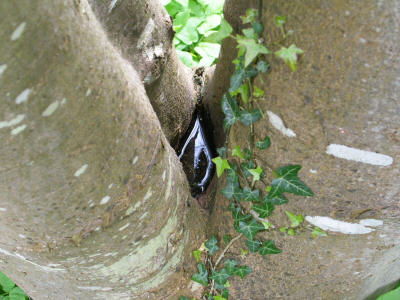 |
The trees I've noticed which occasionally develop crotches are Sycamore (above) and Beech (below) and Ash further down. Old trees tend to be devoid of these pools because of the way the wood grows over the years. In some cases, as the image below shows, birds can access the pool and so can 'contaminate' the water with their feet or beaks which can often carry a variety of aquatic life forms from other pools. Red dot Rotifers are commonly found in bird baths, but I did not find any in these tree pools.
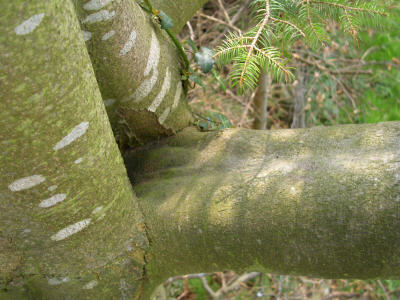 |
This crotch in a Beech tree seemed to be almost dry and seemed more susceptible to evaporation though I did notice over a period of time that the pocket never dryed out completely until prolonged summer weather occured.
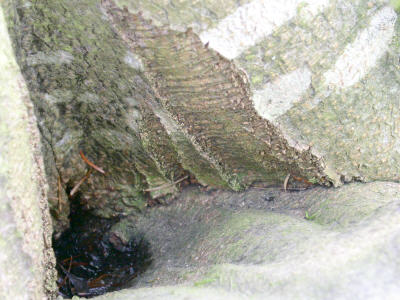 |
Occasionally tree boles that stay in contact with each other fuse together as can be seen below of this example of Ash. The union is as yet incomplete on the upper surface and so water can trickle into it. The lack of any algal species in the water pool suggests that very little light is present at the bottom of the pocket, though protozoans thrive in the richly organic water soaked debris.
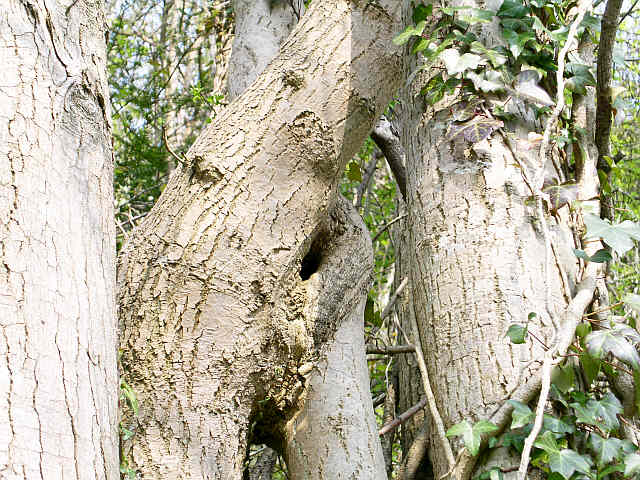 |
A short selection of samples of images taken from several tree crotch pools
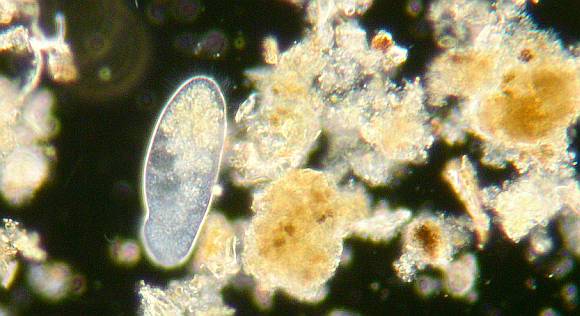 |
A lively ciliate wanders through the richly organic aquatic environment.
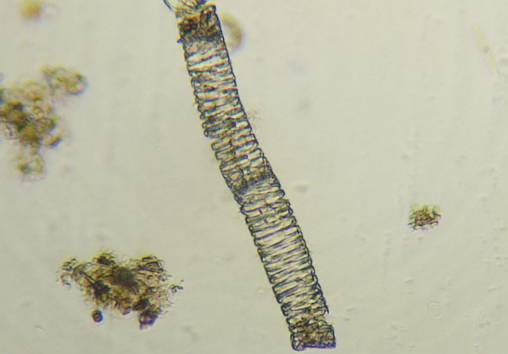 |
These 'spring' like
structures were found in abundance in some pools. I'm not sure
what they are
but they remind me
of the spiral thickening found in wood growth. Could these have
been released as part of the growth in the crotch itself ?
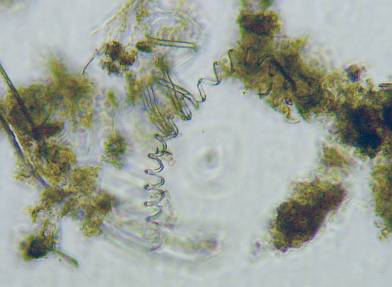 |
Ditto
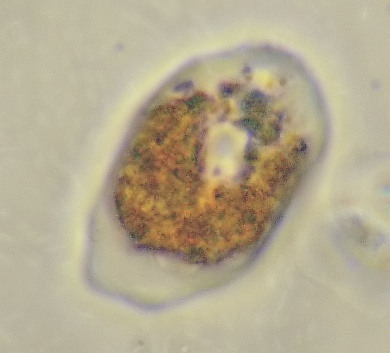 |
High power image of interesting protoplasmic colouring in small amoeba which did not change its basic form. The nucleus remained fixed near centre and the water vacuole remained in one place shown by the yellowish spot at rear (top ).
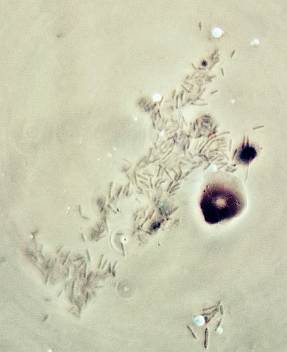 |
A curiously dark stained minute amoeba feeding on bacteria
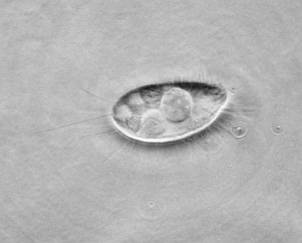 |
Very common ciliate also found in soil. Water vacuole at extreme left of cell.
This particular sort rarely keep still !
| All comments welcome by the author Paul James |
Microscopy
UK Front Page
Micscape
Magazine
Article
Library
Please report any Web problems or offer general comments to the Micscape Editor.
Micscape is the on-line monthly magazine of the Microscopy
UK web
site at Microscopy-UK
© Onview.net Ltd, Microscopy-UK, and all contributors 1995 onwards. All rights reserved. Main site is at www.microscopy-uk.org.uk with full mirror at www.microscopy-uk.net .